We are pleased to share the second article in our Taylor Swift blog series. Our series highlights several chapters of the recently published book ‘Taylor Swift and Philosophy: Essays from the Tortured Philosophers Department’ by Catherine M. Robb and Georgie Mills and builds up to our anticipated ‘Taylor Swift and philosophy’ public lecture at LSE. In this week’s article Eline Kuipers shares insights about Taylor Swift’s secret messages.
While Taylor Swift’s success can be ascribed to many things, what has probably made her most successful is the relationship she has developed with her fans. Fundamental to this relationship are the surprising clues and references, known as “Easter eggs”, that Swift hides in her work.
Taylor Swift is known for hiding Easter eggs in almost everything she does and creates. She started the hunt by hiding secret messages within song lyrics in her album booklets. Fans who took the time to follow the breadcrumbs of capital letters left by Swift could find secret messages like “I cried while recording this” (“Fifteen”) hidden within her albums. Although Swift stopped hiding messages in her printed song lyrics after her 1989 era, it was the start of an age of Easter eggs. For example, her music video for “ME!” featured neon letters on top of a building, revealing the title of her then-upcoming album Lover. Similarly, Swift’s social media announcement of Red (Taylor’s Version) contained song titles from her album Speak Now, hinting that this would be the next re-recorded album to be released. Swift knows all too well that the devil is in the details, so she packs her work with as many cryptic clues as she can.
Not only is Taylor Swift known for her ingenious way of hiding announcements and references, but her fanbase is renowned for thoroughly unravelling and discussing these mysteries. Numerous blogs, YouTube channels, Instagram and TikTok accounts are dedicated to analysing everything she does for the hint of an Easter egg. When she uploads a post on social media or makes a surprising remark during a concert, just like clockwork, the investigations begin. Why are Easter eggs so intriguing? What causes Swifties to spend hours trying to find and interpret them?
Enchanted by Puzzles
We can understand Taylor Swift’s Easter eggs as a type of puzzle – mysterious clues and references that need to be found and deciphered. Humans have always been enchanted by puzzles. Puzzles make us look at the world from different perspectives, make us think in ways we have never thought before, and guide our attention to novel things. Precisely because working on a puzzle requires mental effort, the most satisfying part of the experience happens when our pondering is abruptly stopped by the solution presenting itself to us. We have all experienced the “Aha!” moment that elicits a rush of excitement and relief. Feeling wonderstruck is what makes us come back to the timeless, mind- bending world of puzzles. And humans are not alone in their love for puzzles: animals of all kinds are known to enjoy engaging with puzzles, suggesting that our interest in them might be a deep-rooted evolutionary trait.
By filling her work with Easter eggs, Taylor Swift makes good use of this deep-rooted love for puzzles. Because Swift is known for hiding secret messages and clues, every aspect of her life generates a feeling of suspense among Swifties. She even plays with this suspense by planting Easter eggs that cannot yet be unravelled at the time of their release. Consequently, fans need to keep returning to her work and life to fully engage in the scavenger hunt. By weaving her little webs of clues and hints, Swift makes fans engage with her work in a profound and active way. Finding and understanding an Easter egg creates a strong connection between the creator and the audience. Swift has left the eggs especially for her fans to uncover, which signals to them that they are important and seen. Acing her tests rewards fans for their loyalty by giving them a secret message. Hence, Easter eggs are Taylor Swift’s way of secretly communicating with her most dedicated fans.
Trying to Know Somebody You Never Met
This strong connection between Taylor Swift and her fans can be understood as a “parasocial relationship”. Within a parasocial relationship, someone experiences an intimate and familiar connection with an artist or celebrity, as if they know them personally, while their relationship is actually non-reciprocated. Parasocial relationships are formed through parasocial interactions, which are interactions that are experienced as personal and shared, while in fact, they are not. For instance, a video in which Taylor Swift looks straight into the camera and says “It’s me. Hi!” may be experienced as if she is talking to a fan personally, even though fans know this cannot be the case.
Parasocial relationships are common in all sorts of fandoms, which is why philosophers are becoming increasingly interested in them. For instance, Catherine Robb and Alfred Archer have argued that cultivating and maintaining parasocial relationships with fans is a skill that some celebrities have mastered better than others. What makes Taylor Swift a mastermind is that she provides her fans with an abundance of parasocial interactions through her Easter eggs, with each of these secret messages strengthening their parasocial relationship. It might be her best laid plan. By giving their blood, sweat, and tears searching for and deciphering Swift’s coded clues, Swifties feel strongly connected to their idol.
Fans engage in parasocial relationships because they want to experience such a strong connection and feel like they belong. Humans have a fundamental desire to belong, which expresses itself in our innate yearning to form and maintain social bonds. After all, humans are social animals that thrive by living in societies and for whom loneliness causes distress and pain. Social bonds provide us with much-needed comfort, reassurance, and guidance. As Gen Eickers puts it: “Feelings of belonging involve an emotional sense of security, a sense of feeling at home with others, and a sense that one can reach out for support”. Like other kinds of social relationships, parasocial relationships can deliver such a sense of belonging.
It’s Nice to Have a Friend
We all need to find our place in this world, as Swift sings in “A Place in This World”, but we are not alone and on our own in doing so. Our connections to others play a key role in exploring who we are, in defining our own authentic identities. As argued by Charles Taylor, we define our identity “always in dialogue with, sometimes in struggle against, the identities our significant others want to recognize in us”. Thus, the people that we are connected to, who provide us with a sense of belonging, help us form and express our own opinions, aspirations, and ideals by interpreting our identity.
The question is whether such a dialogue can take place in a parasocial relationship. As pointed out by Archer and Rob, parasocial relationships are characterized by structural asymmetries of communication, attention, and knowledge. Taylor Swift can communicate with her fans, but they cannot directly communicate with her. Meanwhile, Swifties pay more attention to Swift than the artist does to her individual fans. This makes that Swifties know a lot about Taylor Swift’s work and life, while she knows very little if anything at all about the lives of her fans. From these characteristics arises, according to Archer and Rob, a more substantial asymmetry in the way in which fans and celebrities can influence each other’s identity. Celebrities, such as Taylor Swift, mainly play a directive role in the identity formation of fans. Because many Swifties see Taylor as a friend or mother figure, she has a great influence on their beliefs, desires, and interests. The fans, on the other hand, do not have such a directive influence on Taylor Swift. Rather, Swifties interpret her public identity, like they interpret her Easter eggs, by expressing judgements about the ways she behaves and presents herself. However, Swift cannot interpret the identities of her fans, as she cannot get to know all of them individually. As such interpretation is crucial to developing and expressing our identities, no meaningful dialogue about identity can take place within a parasocial relationship.
Nevertheless, being a Swiftie can help Taylor Swift fans figure out who they are and who they want to be. Swift’s Easter egg mayhem has created a bond between fans that goes further than just the search for secret messages. The lively discussion of her Easter eggs among fans is what transforms them from a group of individuals into a community characterized by shared interests, understanding, and camaraderie. Members of the Taylor Swift fandom feel connected through their love for the singer and her work, but it is their interaction with each other that really brings them together. Belonging to a community allows fans to seek and shape their own identity through dialogue that consists of both interpretation and direction. The felt sense of belonging itself is also of importance, as it provides a safe place to be vulnerable and initiate fearless dialogue. Hence, Taylor Swift does not just enchant her fans with musical masterpieces and mercurial music videos, but through her Easter eggs, she also provides the basis for a community to which Swifties can belong and in which they can explore their own identities.
By Eline Kuipers
Eline Kuipers is a doctoral researcher in philosophy of mind at Ruhr University Bochum, Germany, where she is part of the Situated Cognition Research Training Group. Her work investigates how we plan, control, and execute our actions. This blog post has been based on and contains parts of her chapter in the upcoming volume Taylor Swift and Philosophy, which explores the philosophical topics that arise from Taylor Swift’s life and music.
On Monday 28 October, LSE Philosophy is hosting the public lecture ‘Taylor Swift and philosophy’ with Eline Kuipers (Ruhr University Bochum), King-Ho Leung (King’s College London), Georgie Mills (Tilburg University), Catherine M Robb (Tilburg University) and Jonathan Birch (LSE Philosophy). The event is free and open to all. You can attend in-person or online. More information about the event.


























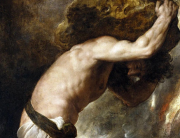















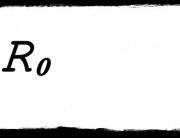

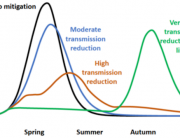
































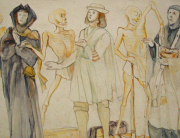





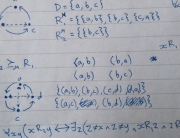





















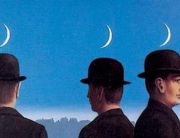



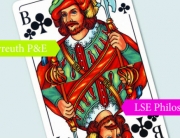














Connect with us
Facebook
Twitter
Youtube
Flickr